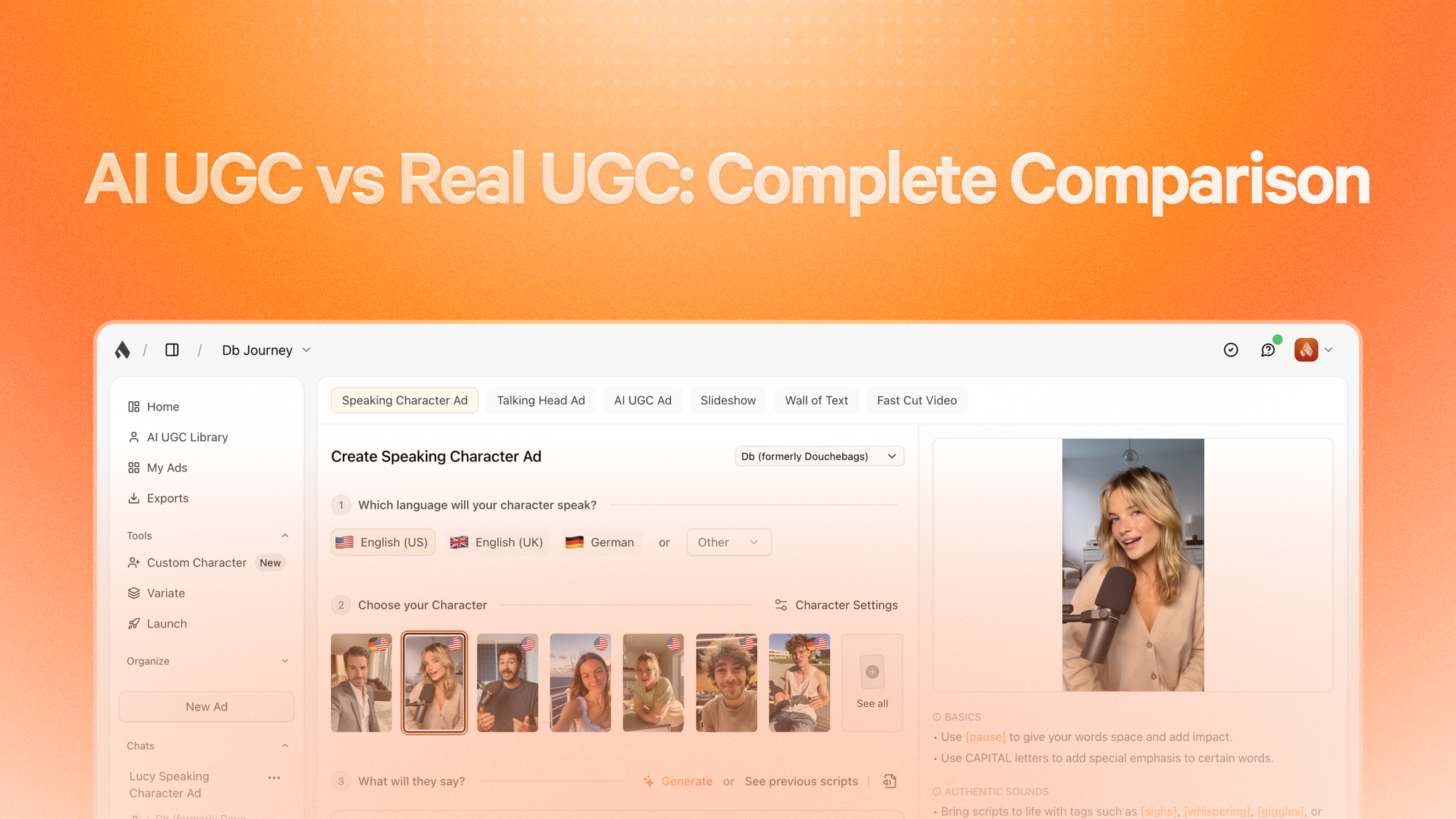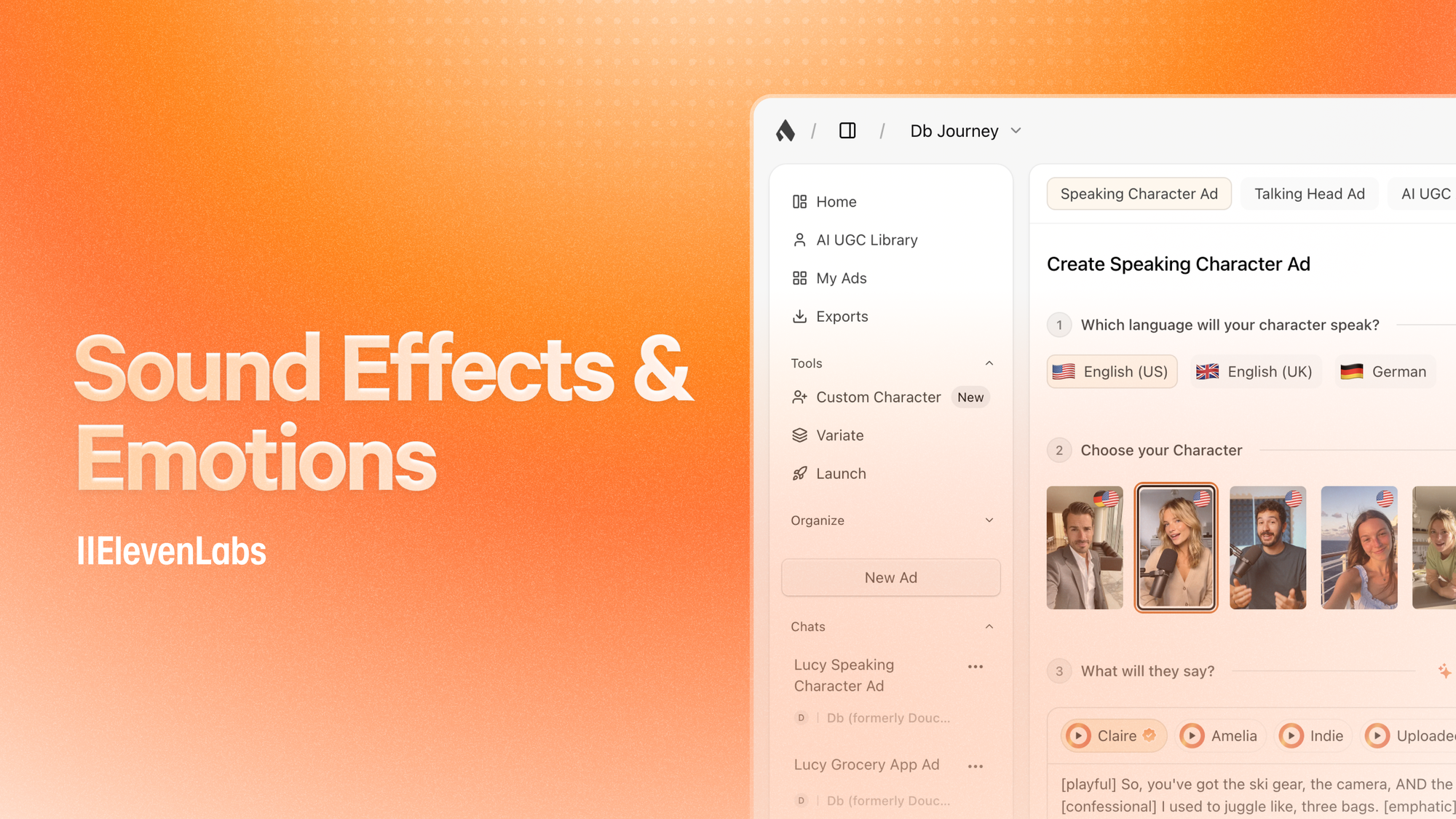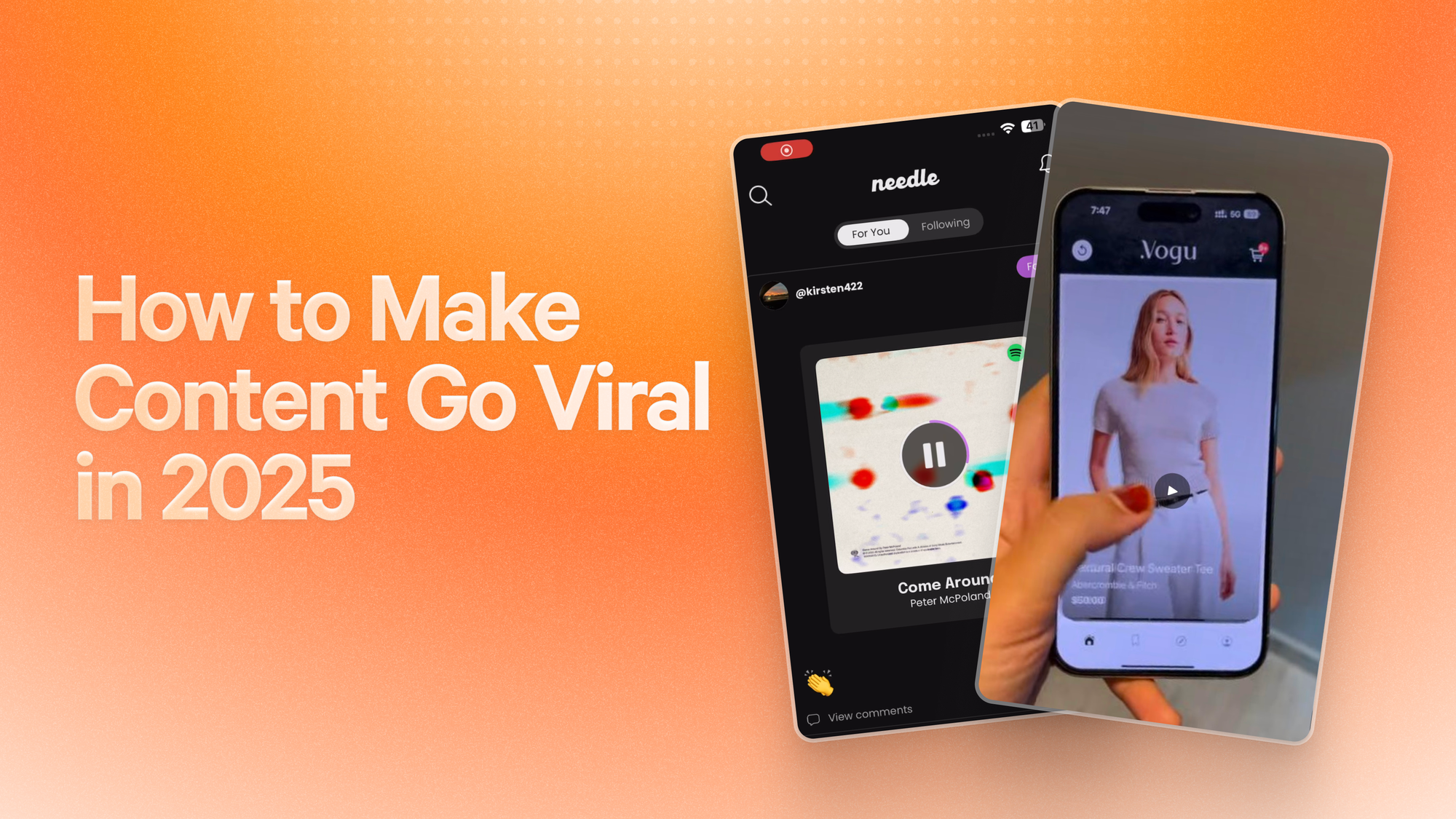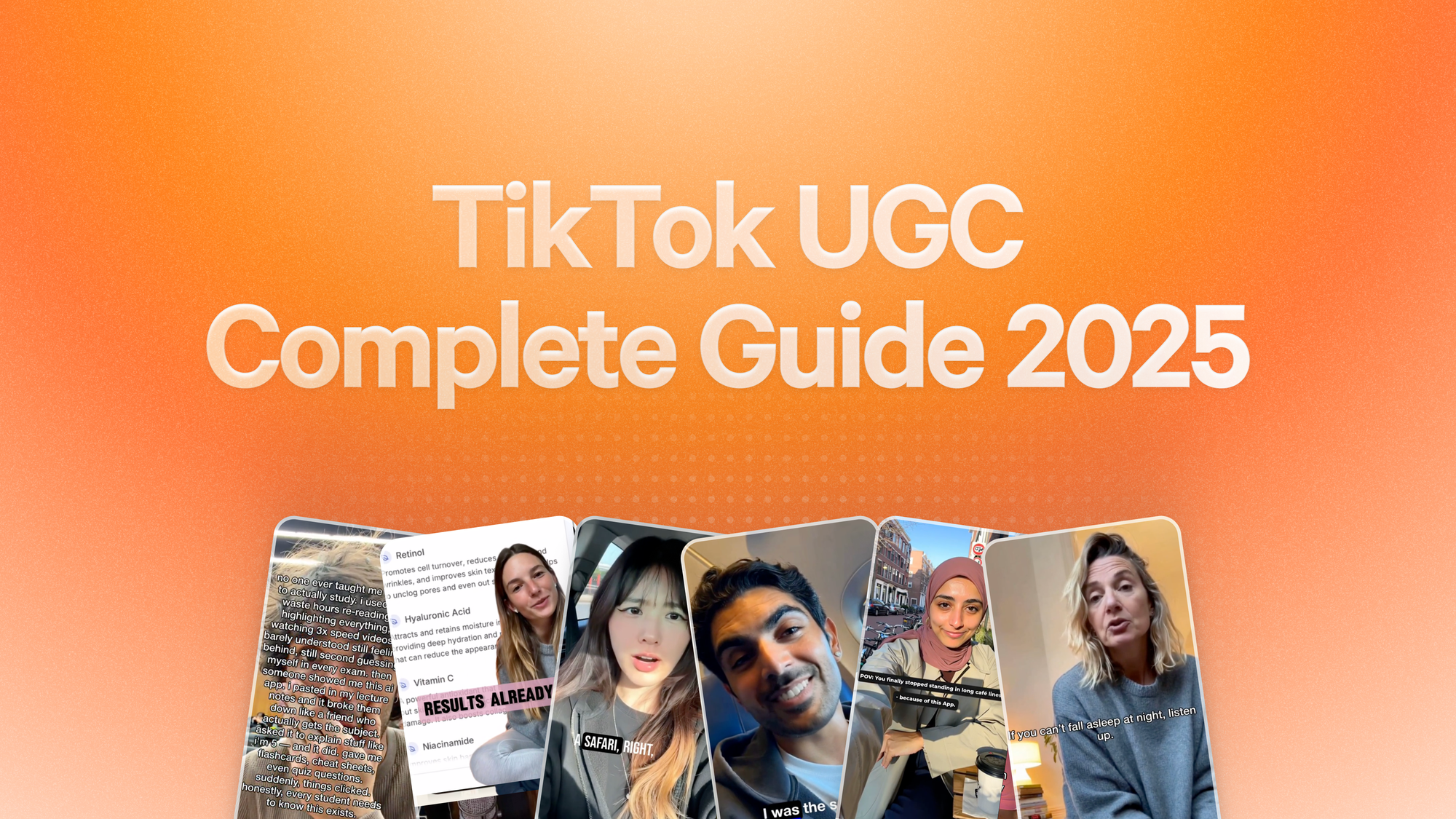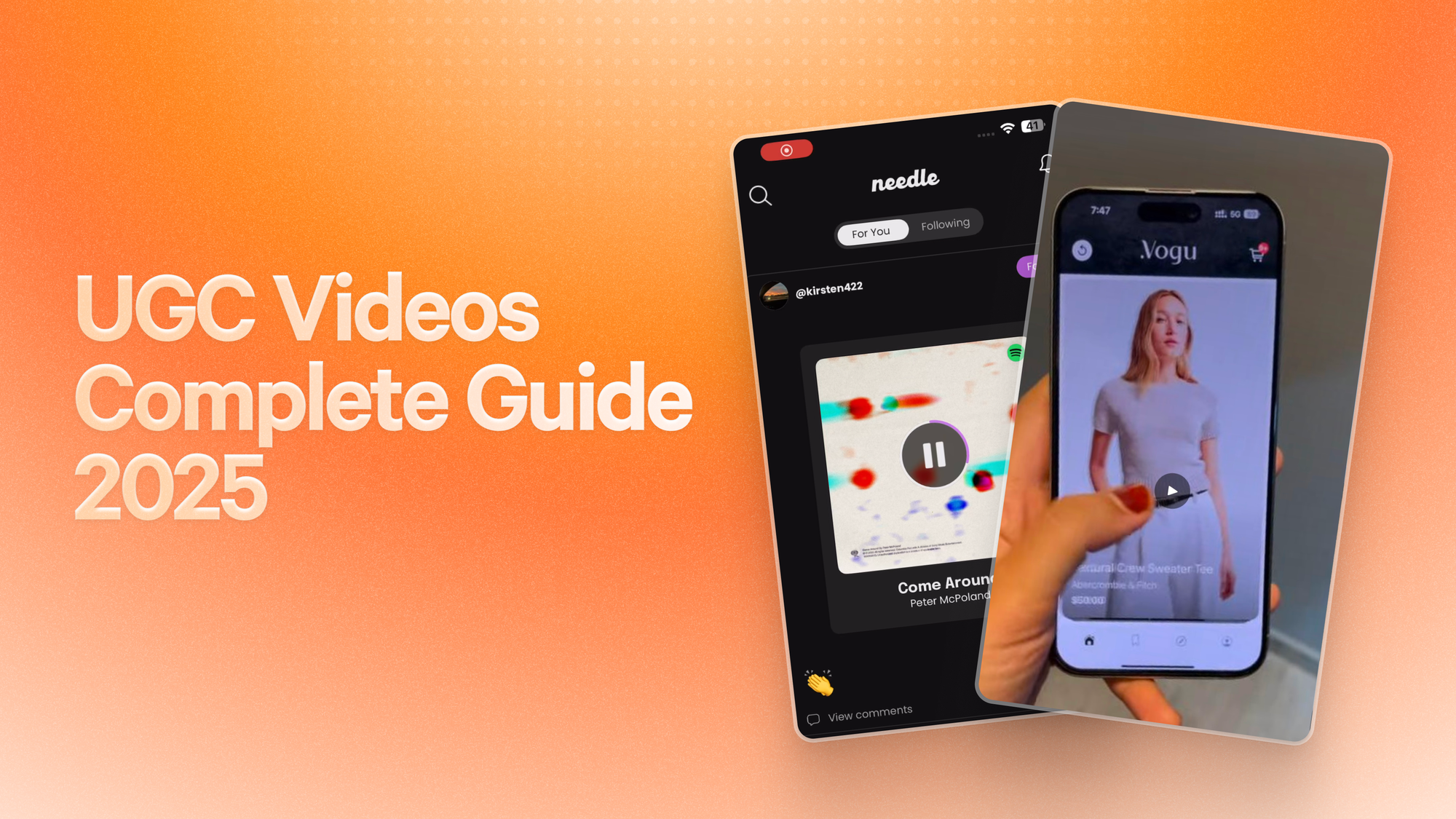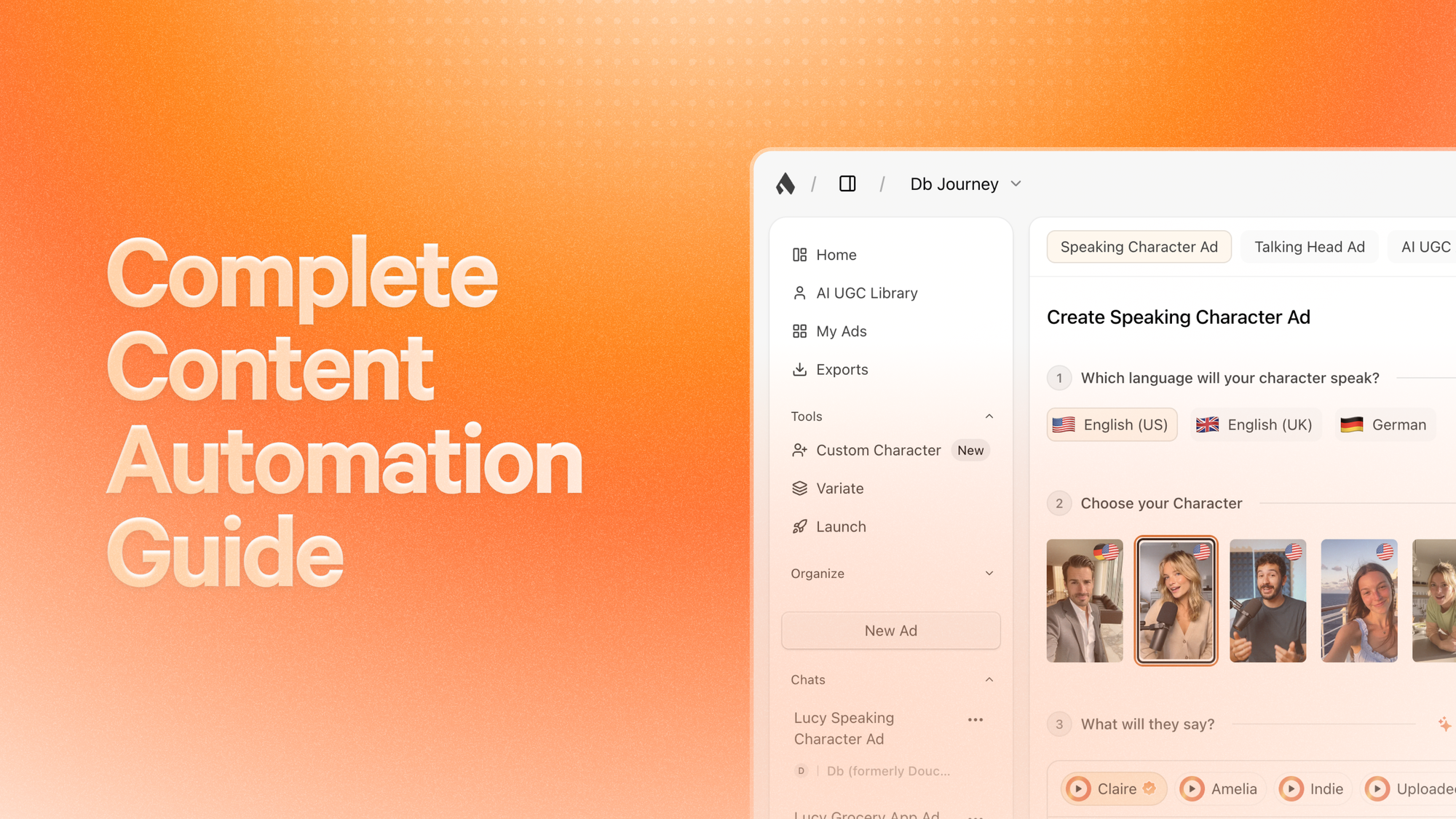AI Generated UGC vs Real UGC: Performance Study (2025)
TikTok changed the game when they started rewarding authentic content over polished brand videos. Now their algorithm detects the difference between passive engagement and active appreciation - and the results might surprise you.
Our analysis of 2024-2025 performance data reveals something counterintuitive: AI-generated UGC is outperforming traditional UGC in specific metrics while falling behind in others. The key isn't choosing one approach over another - it's understanding when each delivers maximum impact for your app marketing goals.
This performance study breaks down real conversion data, platform-specific results, and cost efficiency metrics to help you make evidence-based decisions about your UGC strategy.
The Performance Metrics That Actually Matter
Conversion Rate Performance: The Bottom Line
AI UGC Conversion Results:
- ChargeHub (EV charging app): 46% lower cost per install when using AI UGC vs. banner ads
- Viluu (social platform): AI UGC outperformed both traditional UGC and animation ads in budget efficiency
- Mobile apps using AI UGC: 63% increased likelihood of user installation after viewing content
Traditional UGC Conversion Benchmarks:
- 161% increase in conversions when traditional UGC appears on product pages (Yotpo analysis of 200,000 stores)
- 104% conversion lift when website visitors interact with UGC (up from 101% in 2021)
- Iconic London: 126% conversion rate lift and 11% average order value increase within 12 months
The data shows traditional UGC maintaining higher absolute conversion rates, while AI UGC delivers better cost efficiency and scalability for app marketing campaigns.
Engagement Depth Analysis
AI UGC Engagement Metrics:
- Up to 350% higher engagement rates on TikTok campaigns (18.5% vs. 5.3% for human UGC)
- 2.8x more views and 3.5x more shares compared to human-created content
- 68% consumer quality approval rating
Traditional UGC Engagement Performance:
- 28% higher engagement than branded content on Instagram
- 70% of Gen Z and 78% of millennials say UGC influences their buying decisions
- 81% perceived authenticity rating vs. 63% for AI UGC
What's interesting: AI UGC wins on volume metrics (views, shares, immediate engagement) while traditional UGC dominates quality metrics (trust, authenticity, purchase influence).
Platform Algorithm Preferences
TikTok Performance Data:
- User-generated videos have 22% higher trending probability than brand-created content
- UGC drives 60% of brand engagement on the platform
- Algorithm rewards content that generates "active appreciation" over passive views
- AI UGC performs particularly well due to rapid iteration capabilities
Instagram Algorithm Response:
- UGC posts earn 28% more engagement than branded posts
- 70% purchase likelihood increase when products appear in UGC
- Instagram Stories with UGC see 20% more swipe-ups
- Algorithm favors authentic interaction signals over easily manipulated metrics
Cross-Platform Insights:
- TikTok engagement rates: 9.74% for accounts with 100K-500K followers
- Instagram Reels engagement: 6.59% for similar follower counts
- YouTube and Facebook show similar preferences for authentic content over polished production
Cost Efficiency Deep Dive
Production Cost Analysis
AI UGC Cost Structure:
- Mostly Subscription models
- Effective cost per video: Appr. $2
- No coordination overhead, revision costs, or creator management
- Instant global localization capabilities
Traditional UGC Investment:
- Average cost per video: $150-212 per piece
- Additional costs: coordination time, revision rounds, creator management
- Platform-specific adaptation: $50-100 per format
- Geographic expansion: New creators required for each market
Real ROI Calculation: For testing 50 video variations:
- AI UGC: $99 total cost
- Traditional UGC: $7,500-10,600 total investment
- Cost difference: 98% savings with AI approach
This dramatic cost difference is why forward-thinking apps are allocating more budget to testing. With AI UGC tools, you can test 50 different hooks, angles, and messages for the same price as a single traditional video. The winners from these tests then inform your broader creative strategy.
Time-to-Market Impact
Speed Comparison Data:
- AI UGC: Content ready in 16 minutes average
- Traditional UGC: 2-3 weeks from concept to final video
- Market response capability: AI enables same-day campaign adjustments
- Testing velocity: 50x faster iteration cycles with AI approach
Competitive Advantage Analysis: Apps using AI UGC can respond to market changes, competitor launches, or trending topics within hours rather than weeks. This speed advantage translates to capturing time-sensitive opportunities and staying relevant in fast-moving markets.
When a competitor launches a new feature or a trend emerges on TikTok, the apps that win are those that can create and test relevant content immediately. Superscale users regularly report going from trend discovery to published ad in under 30 minutes - a timeline that's impossible with traditional creator partnerships.
Industry-Specific Performance Patterns
Mobile App Marketing Results
Gaming Apps:
- AI UGC shows 40% better performance for gameplay demonstration videos
- Traditional UGC more effective for community building and long-term retention
- Hybrid approach: AI for feature announcements, human for testimonials
Productivity Apps:
- AI UGC excels at explaining complex features (52% better comprehension)
- Traditional UGC stronger for use case scenarios and problem-solving narratives
- Business apps benefit from AI's professional presentation consistency
Social Apps:
- Traditional UGC maintains 70% higher trust scores
- AI UGC effective for onboarding flows and feature tutorials
- Platform growth correlation: human UGC drives network effects more effectively
E-commerce and Retail Integration
Product Demonstration Performance:
- AI UGC: 89% accuracy in feature explanation, consistent quality
- Traditional UGC: 94% authenticity perception, higher purchase intent
- Conversion optimization: AI for awareness, human for consideration stage
Brand Trust Metrics:
- Traditional UGC: 83% brand trust rating
- AI UGC: 71% brand trust rating
- Trust gap narrows to 5% when AI disclosure is transparent and appropriate
Actionable Implementation Framework
When to Choose AI UGC
High-Impact Scenarios:
- Feature Launch Campaigns: Need multiple variations quickly to test messaging
- Global Market Expansion: Require localized content without international creator networks
- A/B Testing Programs: Want to test 20+ creative approaches cost-effectively
- Technical Product Demos: Need consistent, accurate feature explanations
- Rapid Response Marketing: Must react to trends or competitor moves within hours
Platform Optimization:
- TikTok: AI UGC performs exceptionally well due to algorithm preference for engagement volume
- Instagram: Effective for Stories and Reels, less optimal for feed posts
- Facebook: Strong performance for app install campaigns and retargeting
- YouTube: Effective for explainer content and tutorial formats
When Traditional UGC Dominates
Strategic Use Cases:
- Brand Trust Building: Long-term relationship development with customers
- Community Development: Creating authentic user communities and advocates
- Complex Problem Solving: Detailed use case scenarios and success stories
- Premium Brand Positioning: Luxury or high-trust industries requiring authenticity
- Emotional Storytelling: Personal transformation or life-change narratives
Quality Over Quantity Scenarios:
- Customer retention campaigns where trust is paramount
- High-consideration purchases requiring social proof depth
- Brand reputation management during sensitive periods
- Influencer partnership strategies for audience crossover
Hybrid Strategy Optimization
The 70-30 Rule: Most successful app marketing campaigns use 70% AI UGC for volume and testing, 30% traditional UGC for trust and authenticity. This ratio shifts based on industry:
- SaaS/Productivity Apps: 80% AI, 20% traditional
- Social/Community Apps: 60% AI, 40% traditional
- Financial/Health Apps: 50% AI, 50% traditional
Sequential Campaign Strategy:
- Launch Phase: AI UGC for rapid market testing and initial traction
- Growth Phase: Hybrid approach for scaling while building trust
- Maturity Phase: Traditional UGC focus for community building and retention
The most successful app marketers we've studied don't debate AI vs traditional, they use both strategically. They leverage AI's speed and cost efficiency to identify winning messages, then amplify those insights with authentic creator content. This approach typically reduces overall creative costs by 40-60% while improving conversion rates.
Platform-Specific Performance Optimization
TikTok Algorithm Insights
AI UGC Advantages:
- Algorithm rewards rapid iteration and trend adaptation
- AI content can be optimized for viral elements more systematically
- Lower barrier to testing trending audio, effects, and formats
- Better performance on broad targeting due to content consistency
Optimization Tactics:
- Use AI UGC for trend-jacking and rapid response content
- Leverage AI's ability to create multiple format variations instantly
- Focus on entertainment value over explicit product promotion
- Test various AI avatar demographics to match audience preferences
Instagram Performance Patterns
Format-Specific Results:
- Stories: AI UGC performs well for quick feature highlights and announcements
- Reels: Mixed results - AI effective for tutorials, traditional better for lifestyle content
- Feed Posts: Traditional UGC maintains significant advantage in comments and saves
- IGTV: AI UGC strong for educational content, traditional for personal narratives
Engagement Optimization:
- Use AI UGC for high-frequency posting without creator fatigue
- Traditional UGC for posts targeting maximum engagement depth
- Hybrid approach: AI narration over real user interface recordings
YouTube Strategy Differentiation
Content Type Performance:
- Tutorials: AI UGC shows 67% better information retention
- Reviews: Traditional UGC maintains 89% higher credibility scores
- Demos: AI effective for feature walkthroughs, human for use case scenarios
- Long-form: Traditional UGC significantly outperforms for 10+ minute content
Measuring Success: KPIs That Matter
Conversion Funnel Analysis
Awareness Stage Metrics:
- AI UGC: Higher reach, lower cost per impression, faster content iteration
- Traditional UGC: Better brand recall, higher share rates, stronger word-of-mouth
Consideration Stage Performance:
- AI UGC: Effective for feature education and comparison content
- Traditional UGC: Superior for addressing concerns and building confidence
Conversion Stage Results:
- AI UGC: Good for low-commitment actions (app downloads, sign-ups)
- Traditional UGC: Better for high-commitment decisions (subscriptions, purchases)
Long-term Brand Impact
Brand Equity Measurement:
- Traditional UGC builds stronger long-term brand associations
- AI UGC effective for immediate campaign objectives
- Combined approach maximizes both short-term performance and long-term value
Customer Lifetime Value:
- Users acquired through traditional UGC show 23% higher retention rates
- AI UGC users demonstrate faster initial engagement and feature adoption
- Hybrid approach users exhibit optimal balance of acquisition speed and retention
Future Trends and Considerations
Technology Evolution Impact
AI Advancement Trajectory:
- Deepfake detection becoming more sophisticated, requiring higher quality AI UGC
- Voice cloning and personalization capabilities improving AI authenticity scores
- Real-time generation enabling dynamic, personalized UGC at scale
Platform Policy Evolution:
- Increasing disclosure requirements for AI-generated content
- Algorithm adjustments to balance AI and human content visibility
- New metrics emerging to measure authentic engagement vs. algorithmic manipulation
Market Maturity Predictions
Adoption Patterns:
- Early adopters already seeing 40-60% of their UGC from AI sources
- Traditional brands slowly integrating AI UGC for efficiency gains
- Creator economy adapting to incorporate AI tools rather than compete with them
Performance Convergence:
- AI UGC authenticity gap narrowing from 18% to projected 8% by 2026
- Traditional UGC costs increasing due to creator market maturation
- Hybrid approaches becoming standard practice rather than experimental
Strategic Recommendations
Implementation Roadmap
Phase 1: Testing (Month 1-2)
- Start with AI UGC for 20% of your content volume
- Focus on feature explanation and tutorial content
- Measure against existing traditional UGC benchmarks
- Test different AI avatars and presentation styles
Need help getting started? Create your first AI UGC video in under 10 minutes - no credit card required. Most apps discover their winning creative formula within the first 20 test videos.
Phase 2: Optimization (Month 3-4)
- Increase AI UGC to 40-60% based on Phase 1 results
- Develop hybrid content combining AI narration with real app footage
- Establish clear use case guidelines for each content type
- Begin training team on AI UGC best practices
Phase 3: Scale (Month 5+)
- Implement optimal AI/traditional ratio based on your industry and goals
- Develop automated workflows for AI UGC production
- Build measurement systems for long-term brand impact
- Create feedback loops for continuous optimization
Budget Allocation Strategy
Recommended Spend Distribution:
- Testing Budget: 60% AI tools and platforms, 40% traditional creator partnerships
- Scale Budget: Adjust ratio based on performance data and brand positioning
- Innovation Budget: 10% allocated to emerging AI UGC technologies and techniques
ROI Optimization:
- Track cost per acquisition across both approaches
- Measure customer lifetime value for each content type
- Calculate brand equity impact using sentiment analysis and brand tracking studies
FAQ: Making the Right Choice
How do I know which approach is right for my app?
The decision depends on three key factors: your industry's trust requirements, your budget for testing and iteration, and your timeline for market response.
High-trust industries (finance, health, security) should start with 70% traditional UGC to build credibility. Entertainment and productivity apps can begin with 70% AI UGC for rapid testing and optimization. Social and community apps benefit from a balanced 50-50 approach to maintain authenticity while scaling content.
Test both approaches with small budgets first. If your app requires explaining complex features or technical functionality, AI UGC typically performs better. If your value proposition is emotional or lifestyle-focused, traditional UGC usually wins.
What platforms show the biggest performance differences?
TikTok shows the largest performance gap favoring AI UGC, with 350% higher engagement rates in some categories. Instagram maintains more balanced performance between both approaches. YouTube and Facebook tend to favor traditional UGC for longer-form content but AI UGC for quick explainers.
The key is matching content type to platform preference: use AI UGC for TikTok trend-jacking and rapid iteration, traditional UGC for Instagram community building and YouTube storytelling.
How do I measure authenticity impact on my brand?
Track three key metrics: brand sentiment analysis, customer lifetime value by acquisition source, and retention rates. Users acquired through traditional UGC typically show 23% higher retention rates, while AI UGC users demonstrate faster initial engagement.
Set up tracking to measure not just immediate conversions but also long-term brand equity. Use surveys to measure trust scores and authenticity perception. Monitor social mentions and sentiment to understand how each content type affects brand perception over time.
Can I combine both approaches effectively?
The most successful strategies use AI UGC for volume and efficiency, traditional UGC for trust and authenticity. The optimal ratio varies by industry: SaaS apps often use 80% AI content, while social apps benefit from 60% AI, 40% traditional.
Create content workflows that leverage each approach's strengths: AI UGC for feature announcements and rapid testing, traditional UGC for customer success stories and community building. Use AI to generate initial concepts that human creators can then personalize and authenticate.
What's the biggest mistake brands make when choosing between AI and traditional UGC?
The biggest mistake is treating this as an either-or decision rather than a strategic combination. Brands that go 100% AI UGC often sacrifice long-term trust for short-term efficiency. Those that stick entirely with traditional UGC miss opportunities for rapid testing and cost optimization.
Another common error is not adapting the content strategy to platform algorithms. What works on TikTok (high-volume AI content) may not work on Instagram (authentic community content), and brands that apply the same approach across all platforms underperform.
Take Action: Optimize Your UGC Strategy Today
The performance data is clear: neither AI-generated nor traditional UGC is universally superior. The winning strategy combines both approaches strategically based on your specific app, audience, and business goals.
Your immediate next steps:
- Audit your current UGC performance - Identify which content types drive your highest conversions
- Test the 70-30 hybrid approach - Start with AI UGC for 70% of volume, traditional for 30% of high-trust content
- Measure platform-specific performance - Track how each approach performs on TikTok vs Instagram vs other channels
- Optimize based on real data - Adjust your AI/traditional ratio based on actual conversion and retention metrics
The apps and brands winning in 2025 won't be those using the "best" UGC approach - they'll be those using the right combination of approaches for their specific goals and audience.
Ready to implement what you've learned? Superscale gives you everything you need to execute the hybrid UGC strategy outlined in this study. Generate your first test batch of AI UGC videos today and compare them against your traditional content - the results typically speak for themselves within the first week of testing.


